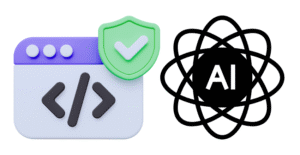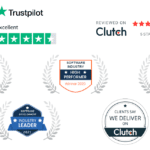Change management plays a crucial role in effectively managing the dynamic nature of DevOps practices. In the fast-paced world of continuous delivery, organizations must be able to adapt to complex and rapid changes. This is where change management comes in. It involves planning, monitoring, and controlling changes to ensure successful implementation.
Implementing change management in DevOps practices brings a plethora of benefits. It reduces the risk of failures and downtime, improves collaboration and communication between teams, enhances compliance and governance, enables continuous improvement, and supports business agility.
However, there are challenges that organizations face when implementing DevOps. Cultural resistance to change, lack of collaboration between teams, a siloed approach to work, technical debt, and lack of executive support can hinder the successful adoption of DevOps practices.
To overcome these challenges, organizations need to focus on strong communication and collaboration, implementing a DevOps culture, addressing technical debt, building executive support, and fostering continuous feedback and improvement.
Practical examples of applying change management in DevOps include continuous integration and deployment, infrastructure as code, agile development, chatOps, and the use of monitoring and analytics.
Embracing change management in DevOps practices is essential for organizations to achieve faster time-to-market, improved software quality, and better customer satisfaction.
The Benefits of Change Management in DevOps

Effective change management in DevOps practices offers a myriad of benefits for organizations. By implementing robust change management strategies, companies can reduce the risk of failures and downtime, ensuring a smooth and uninterrupted continuous delivery process. This proactive approach to managing change allows teams to identify potential risks and address them before they become major issues, thereby improving the overall stability and reliability of the software development lifecycle.
Furthermore, change management enhances collaboration and communication between teams, breaking down silos and facilitating cross-functional cooperation. By bringing together different stakeholders, such as developers, operations, and business representatives, organizations can streamline workflows and foster a culture of teamwork and shared responsibility. This collaborative environment not only improves the efficiency of development and deployment processes but also promotes knowledge sharing and innovation.
In addition to reducing risk and improving collaboration, change management in DevOps practices enhances compliance and governance. It ensures that all changes adhere to regulatory requirements and industry standards, providing organizations with a structured and auditable approach to managing modifications. This adherence to compliance not only mitigates legal and financial risks but also builds trust with customers and stakeholders.
Moreover, effective change management enables continuous improvement within DevOps practices. By regularly reviewing and analyzing the impact of changes, organizations can identify areas for optimization and implement iterative refinements. This continuous improvement mindset fosters innovation, agility, and adaptability, allowing companies to stay ahead of the competition and respond quickly to evolving market demands.
Overall, embracing change management in DevOps practices not only enables organizations to reduce risk and improve collaboration but also enhances compliance, enables continuous improvement, and supports business agility. By implementing change management strategies, companies can achieve faster time-to-market, improved software quality, and better customer satisfaction, ultimately driving their overall success and growth in the digital landscape.
Challenges in Implementing DevOps

Implementing DevOps practices comes with its fair share of challenges. Organizations often face cultural resistance to change, with employees hesitant to adopt new ways of working. This resistance can stem from a fear of job security or a lack of understanding about the benefits that DevOps can bring.
Another challenge is the lack of collaboration between teams. In traditional siloed approaches, different teams work independently, leading to slower processes and limited communication. This lack of collaboration hinders the seamless integration of different stages in the software development lifecycle.
Technical debt is another obstacle that organizations encounter. Technical debt refers to the accumulated cost of postponing necessary software updates or improvements. It can lead to code complexity, maintenance issues, and decreased productivity. Addressing technical debt requires a dedicated effort to refactor and streamline code.
Finally, the lack of executive support can impede the successful implementation of DevOps practices. Without top-level support, it becomes challenging to drive organizational-wide changes and secure the necessary resources for implementation.
Table 1: Challenges in Implementing DevOps
| Challenges | Description |
|---|---|
| Cultural Resistance to Change | Employees resisting new ways of working due to fear or lack of understanding. |
| Lack of Collaboration | Teams working independently, hindering integration and communication. |
| Technical Debt | Accumulated cost of postponing necessary software updates or improvements. |
| Lack of Executive Support | Insufficient top-level backing for driving organizational-wide changes. |
Despite these challenges, organizations can overcome them by focusing on key strategies. Establishing a culture of open communication and collaboration is essential to breaking down silos and fostering cross-functional teamwork. It requires creating an environment where teams exchange knowledge and ideas freely, leading to faster problem-solving and innovation.
Addressing technical debt is also crucial. Organizations should allocate time and resources to refactor code and streamline processes. By doing so, they can reduce complexity, minimize maintenance issues, and improve overall productivity.
Building executive support is paramount for successful DevOps implementation. Leaders need to understand the value of DevOps practices and actively champion their adoption. This support includes providing the necessary resources, prioritizing DevOps initiatives, and advocating for cultural change within the organization.
Continuous feedback and improvement are vital to overcoming DevOps implementation challenges. By regularly seeking feedback from teams and stakeholders, organizations can adapt their processes and address any concerns or roadblocks. This iterative approach enables continuous learning and ensures continuous improvement.
Overcoming Challenges in DevOps Implementation

Overcoming challenges in DevOps implementation requires a comprehensive approach. It is essential for organizations to address the cultural resistance to change, foster collaboration and communication between teams, break down silos, manage technical debt, and secure executive support. By implementing the following strategies, organizations can navigate through these challenges and successfully embrace DevOps practices.
Strong Communication and Collaboration:
A key aspect of overcoming challenges in DevOps implementation is establishing strong communication and collaboration between teams. This involves breaking down barriers and promoting cross-functional collaboration, enabling seamless sharing of information, ideas, and feedback. By fostering an environment that encourages open and transparent communication, organizations can enhance teamwork and drive successful DevOps adoption.
Implementing a DevOps Culture:
Building a DevOps culture is crucial for successful implementation. This entails aligning the organizational mindset, values, and practices with DevOps principles. Organizations should promote a culture of continuous improvement, innovation, and learning, where experimentation and risk-taking are encouraged. By fostering a DevOps culture, organizations can empower their teams to embrace change, adapt quickly to evolving requirements, and drive continuous feedback and improvement.
Addressing Technical Debt:
Technical debt can hinder the progress of DevOps implementation. It is essential for organizations to proactively identify and address technical debt by investing time and resources in refactoring, automation, and quality assurance practices. By prioritizing technical debt reduction efforts, organizations can ensure a solid foundation for successful DevOps implementation and sustainable growth.
Building Executive Support:
Executive support plays a vital role in driving change management initiatives in DevOps practices. It is crucial for organizations to secure buy-in from executives and stakeholders, as their support and advocacy can help overcome resistance, allocate necessary resources, and remove organizational roadblocks. By actively involving executives in the planning and implementation of DevOps practices, organizations can create a conducive environment for successful DevOps transformation.
By adopting a comprehensive approach that focuses on communication and collaboration, implementing a DevOps culture, addressing technical debt, and securing executive support, organizations can overcome the challenges associated with DevOps implementation. This will pave the way for successful adoption of DevOps practices, enabling organizations to achieve faster time-to-market, improved software quality, and better customer satisfaction.
Applying Change Management in DevOps
Change management can be effectively applied in various aspects of DevOps practices. By integrating change management principles and processes, organizations can ensure smooth and controlled transitions during continuous integration, deployment, and infrastructure management. Let’s explore some key areas where change management plays a significant role:
Continuous Integration and Deployment:
In the world of DevOps, continuous integration and deployment are essential for efficient software delivery. Change management practices ensure that all code changes are thoroughly tested and validated before being deployed to production. This minimizes the risk of introducing bugs or errors that could impact the stability of the system.
Infrastructure as Code:
Infrastructure as Code (IaC) enables the automation and standardization of infrastructure provisioning and configuration. Change management ensures that any modifications to the infrastructure follow a controlled and documented process, reducing the chance of misconfigurations or unauthorized changes.
Agile Development:
Change management aligns well with the agile development methodology, enabling organizations to embrace change and respond quickly to customer needs. By incorporating change management in agile practices, teams can effectively manage and prioritize the implementation of new features or enhancements.
ChatOps and Collaboration:
Change management emphasizes the importance of communication and collaboration between different teams involved in the development and deployment process. By utilizing collaboration tools, such as ChatOps platforms, teams can streamline change requests, track progress, and ensure everyone is aligned and informed.
In addition to these examples, change management in DevOps practices can also involve the use of monitoring and analytics to measure the impact of changes and identify areas for improvement. By implementing change management in these aspects, organizations can achieve better control, reduced risk, and improved efficiency in their DevOps processes.
Achieving Faster Time-to-Market with DevOps Change Management
Embracing change management in DevOps practices can significantly impact business outcomes. One of the key benefits of implementing change management in DevOps is the ability to achieve faster time-to-market for software releases. By effectively managing and controlling changes, organizations can streamline their development and deployment processes, reducing the time it takes to release new features and updates.
Improved software quality is another advantage of incorporating change management in DevOps. By implementing robust change management processes, organizations can ensure that software changes are thoroughly tested and validated before being deployed in production environments. This helps to minimize the risk of introducing bugs or errors that could impact the end-user experience.
Customer satisfaction is also closely tied to effective change management in DevOps. By delivering high-quality software releases more frequently, organizations can better meet customer demands and expectations. Responding quickly to customer feedback and incorporating their needs into future releases can help drive customer satisfaction and loyalty.
| Benefits of Change Management in DevOps |
|---|
| – Faster time-to-market |
| – Improved software quality |
| – Enhanced customer satisfaction |
Change management plays a critical role in the success of DevOps practices. By effectively managing and controlling changes, organizations can achieve faster time-to-market, improved software quality, and higher customer satisfaction. Implementing change management processes, such as continuous integration and deployment, infrastructure as code, and agile development, can help organizations stay competitive in today’s rapidly evolving digital landscape.
The Role of Change Management in Continuous Deployment
Change management is integral to successful continuous deployment and release management practices. In the fast-paced world of DevOps, where organizations aim to deliver software updates frequently and seamlessly, change management plays a critical role in ensuring that changes are managed effectively and do not disrupt the overall deployment process.
One of the key aspects of change management in continuous deployment is the establishment of clear processes and protocols for reviewing, approving, and implementing changes. This includes defining roles and responsibilities, setting up change control boards or committees, and establishing standardized change request forms.
Furthermore, change management in continuous deployment involves thorough testing and validation of changes before they are deployed. This helps identify any potential issues or conflicts that may arise due to the changes and ensures that they are resolved before they impact production environments.
Change management is not just a bureaucratic process in DevOps; it is a crucial element that ensures the success and stability of continuous deployment and release management practices. By implementing effective change management processes, organizations can minimize the risks associated with changes, maintain control over the deployment pipeline, and deliver software updates more efficiently and reliably.
DevOps Change Control and Compliance
Change management plays a vital role in ensuring compliance and governance in DevOps practices. It is essential for organizations to have a structured approach to managing changes in order to maintain control and meet regulatory requirements. By implementing effective change control processes, organizations can minimize risks, prevent unauthorized changes, and ensure that changes are aligned with business objectives.
One effective way to achieve change control and compliance in DevOps is through the use of a change management tool or platform. These tools provide a centralized repository for tracking and managing changes, allowing teams to collaborate and document the entire change process. In addition, they enable organizations to implement approval workflows, ensuring that changes are reviewed and authorized before implementation.
Another important aspect of change control and compliance in DevOps is the establishment of clear policies and procedures. By defining standardized processes for change management, organizations can ensure consistency and minimize the risk of errors or unauthorized changes. These policies should outline the roles and responsibilities of team members involved in the change process, as well as the steps required for review, approval, and documentation.
| Key Considerations for Change Control and Compliance in DevOps |
|---|
| Implement a change management tool or platform |
| Establish clear policies and procedures |
| Ensure proper documentation of changes |
| Regularly review and assess the effectiveness of change control processes |
Proper documentation of changes is also crucial for compliance and governance purposes. Organizations should maintain records of all changes made, including the rationale behind each change, the individuals involved, and any approvals obtained. These records serve as a valuable resource for auditing and ensuring adherence to regulatory requirements.
Change management is an integral part of ensuring compliance and governance in DevOps practices. By implementing effective change control processes, utilizing change management tools, establishing clear policies and procedures, and maintaining proper documentation, organizations can achieve compliance while driving successful DevOps initiatives.
Building a Culture of Change in DevOps

Cultivating a culture of change is essential in driving successful DevOps practices. In order to embrace the principles of DevOps and achieve continuous improvement, organizations must foster an environment that encourages innovation, adaptability, and collaboration. By instilling a culture of change, teams are empowered to embrace new technologies, methodologies, and approaches that drive efficiency and productivity in the delivery of software solutions.
One way to create a culture of change is by promoting open communication and collaboration between different teams and departments. Breaking down silos and fostering cross-functional collaboration allows for the sharing of ideas, knowledge, and expertise, which is crucial in driving innovation and improvement. Establishing clear channels of communication and encouraging regular feedback and dialogue ensures that everyone is aligned, working towards common goals, and embracing change as a collective effort.
Another important aspect of building a culture of change is addressing technical debt. Technical debt refers to the accumulated shortcuts and compromises made during the development process, which can hinder progress and make it difficult to adapt to change. By prioritizing and actively managing technical debt, organizations can reduce complexity, increase agility, and create a solid foundation for continuous improvement.
Building a culture of change is vital for organizations looking to succeed in the fast-paced world of DevOps. By promoting open communication, addressing technical debt, encouraging experimentation and learning, and fostering a growth mindset, organizations can create an environment where change is embraced and teams are empowered to drive continuous improvement. The benefits of building a culture of change extend beyond increased innovation and adaptability, as it also leads to improved collaboration, enhanced productivity, faster response to market demands, and the attraction and retention of top talent.
Addressing Technical Debt in DevOps
Addressing technical debt is a critical aspect of effective DevOps practices. Technical debt refers to the accumulated software development work that needs to be done in the future to improve and maintain the quality and sustainability of a system. It often occurs when development teams take shortcuts or make trade-offs to meet short-term goals, but these decisions can result in long-term consequences that slow down the development process and increase the risk of failures.
To tackle technical debt in DevOps, organizations need to prioritize and regularly address these underlying issues. This involves identifying areas where technical debt exists, assessing the impact it has on the system and the team’s productivity, and taking the necessary steps to refactor, optimize, or rebuild components of the system.
One effective approach for addressing technical debt is to establish a governance process that ensures technical debt is properly managed. This process can include conducting regular code reviews, performing automated testing and code analysis, and setting aside dedicated time for refactoring and technical debt reduction. By incorporating technical debt management into the regular development cycle, teams can prevent the accumulation of debt and maintain a clean, maintainable codebase.
| Key Strategies for Addressing Technical Debt in DevOps |
|---|
| 1. Identify technical debt through code reviews and analysis tools. |
| 2. Prioritize and categorize technical debt based on its impact and urgency. |
| 3. Allocate dedicated time for refactoring and technical debt reduction. |
| 4. Automate tests and incorporate continuous testing practices into the development process. |
| 5. Implement a governance process to ensure technical debt is properly managed. |
By addressing technical debt in DevOps practices, organizations can maintain a more stable and scalable system, improve the speed and efficiency of development, and reduce the risk of failures and downtime. It also helps teams to adapt and respond to new requirements and changes more effectively, fostering a culture of continuous improvement and innovation.
Executive Support for Change Management in DevOps

Executive support plays a crucial role in ensuring the success of change management in DevOps practices. When executives actively champion and endorse change initiatives, it sets the tone for the entire organization and paves the way for effective implementation. By providing the necessary resources, budget, and authority, executives empower teams to embrace change and drive the necessary transformations in the organization.
Executive support also helps overcome cultural resistance to change. By leading by example, executives demonstrate their commitment to adopting new practices and encourage employees to embrace change as a positive and necessary component of growth. Their involvement in change management initiatives helps build trust and credibility among teams, fostering a culture of collaboration and open communication.
Benefits of Executive Support
The benefits of executive support for change management in DevOps practices are manifold. Firstly, it helps ensure that change initiatives are aligned with the organization’s strategic goals and vision. Executives provide the necessary guidance and direction to ensure that changes support the overall objectives and bring about tangible improvements.
Secondly, executive support enhances accountability and responsibility across the organization. When executives actively participate in change management efforts, it sends a clear message that change is a collective responsibility. This motivates teams to take ownership of their roles in implementing changes and ensures that everyone is committed to the success of the initiatives.
Lastly, executive support enables effective decision-making. Executives, with their broad organizational perspective and experience, can provide valuable insights and make informed decisions that drive the change process forward. Their support helps eliminate bottlenecks, resolve conflicts, and ensure that change management efforts stay on track.
Continuous Feedback and Improvement in DevOps Change Management

Continuous feedback and improvement are vital in ensuring the effectiveness of change management in DevOps practices. By actively seeking feedback from stakeholders and teams involved in the change process, organizations can identify areas for improvement and make the necessary adjustments to ensure successful implementation.
One way to encourage continuous feedback is by establishing regular communication channels and collaboration platforms. Teams should have the opportunity to share their insights, concerns, and suggestions throughout the change management process. This open dialogue fosters a culture of transparency and empowers individuals to contribute to the improvement of DevOps practices.
Moreover, organizations should embrace a mindset of continuous improvement. This involves regularly evaluating the outcomes of change initiatives and identifying areas that can be enhanced. By analyzing the results and metrics associated with the implemented changes, organizations can identify trends, patterns, and bottlenecks that need to be addressed.
By incorporating feedback and learnings from previous change management experiences, organizations can refine their approach to DevOps and drive continuous improvement. This iterative process helps in optimizing the change management practices and ensures that organizations remain adaptable and responsive to the evolving needs of their customers and the market.
External Sources
https://changemanagementinsight.com/organization-change-management-in-devops/
https://www.atlassian.com/engineering/best-practices-for-change-management-in-the-age-of-devops











